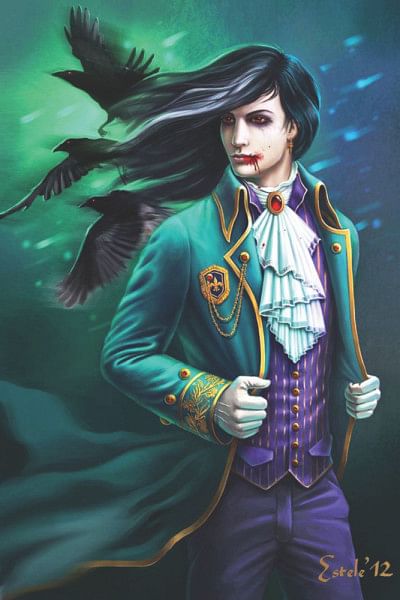Tall, handsome and deathly—the enduring allure of vampires

Growing up, vampires were never quite the James Deans of the undead that they are today. Vampires that I would encounter were middle-aged, had an unwholesome pallor, the same coiffure as Alfalfa from The Little Rascals, and god-awful vaguely-European accents. "Interview with a Vampire" was not exactly G-rated and such was the extent of my exposure.
With the passage of time (and stolen glimpses of writhing limbs and beautiful cursed brides in Bram Stoker's Dracula), one comes to learn of the association of seduction and sensuality with this particular genus of the nightly undead.
The vampire trope has seen many a manifestation through the ages—from Bela Lugosi's caped and clawed Count Dracula, to Gary Oldman's macrocephalic monster, and Let the Right One In's killer pre-teen Eli—which suggests that although their modus operandi necessitates them to be alluring, on-screen vampires were not always as good-looking as they are now.
While every other Hollywood blockbuster features a set of chiselled abs and cheekbones so sharp they could cut someone, what makes Eric Northman and Damon Salvatore so particularly hard to resist? Why are real-life women as spellbound as the victims in vampire stories?
Well vampires are no longer middle-aged, vaguely-European men with a lot of stage makeup thrown on. Tortured, enigmatic, and prone to excessive acts of self-sacrifice for the sake of the heroine, the 21st century vampire is the ultimate incorrigible bad boy. Their often baseless love and unstirring devotion for the terribly average girl next door resonates so strongly with us mere mortals, that they make the perfect formula for young-adult fandom.
Is that all there is to it? On a rather serious note, some academics postulate that vampires represent something called supernormal stimuli—when an animal's instinctive drives are triggered by stimuli that were unnatural amplifications of the normal cues for which their responses were designed to light up.
Bear with me. It's like when birds that normally sit on their own small light-blue eggs preferentially sit on much larger eggs that are painted a brighter shade of blue. Sound familiar? At the risk of sounding misogynistic, vampires do personify overblown versions of features that women tend to find attractive in real life.
Research on mate preferences often shows that women are attracted to men about their own age, but often marry older, not because being old and wrinkly is in itself attractive, but it may be a cue to already-accumulated wealth. From the Salvatores' ancient sprawling mansion to the Cullens' more modern sprawling mansion, these men do not exactly live like indigents.
And even the most impoverished vampire still has superhuman strength, centuries of wisdom, and the ability to resist any physical attack—all attractive features. And apparently, their sharp pointy teeth are also cues of male dominance in the mammalian world. (Don't you just love it when Stefan bares his fangs and goes all Sonic the Hedgehog on his foes?)
The vampire craze might have simmered down for a while, what with Twilight fans having entered their mid-20s and working respectable jobs. But they will be back—darker, more handsome, and better at their mind games since the last time you met.
After all, vampires never get old.
Photo: Collected





Comments